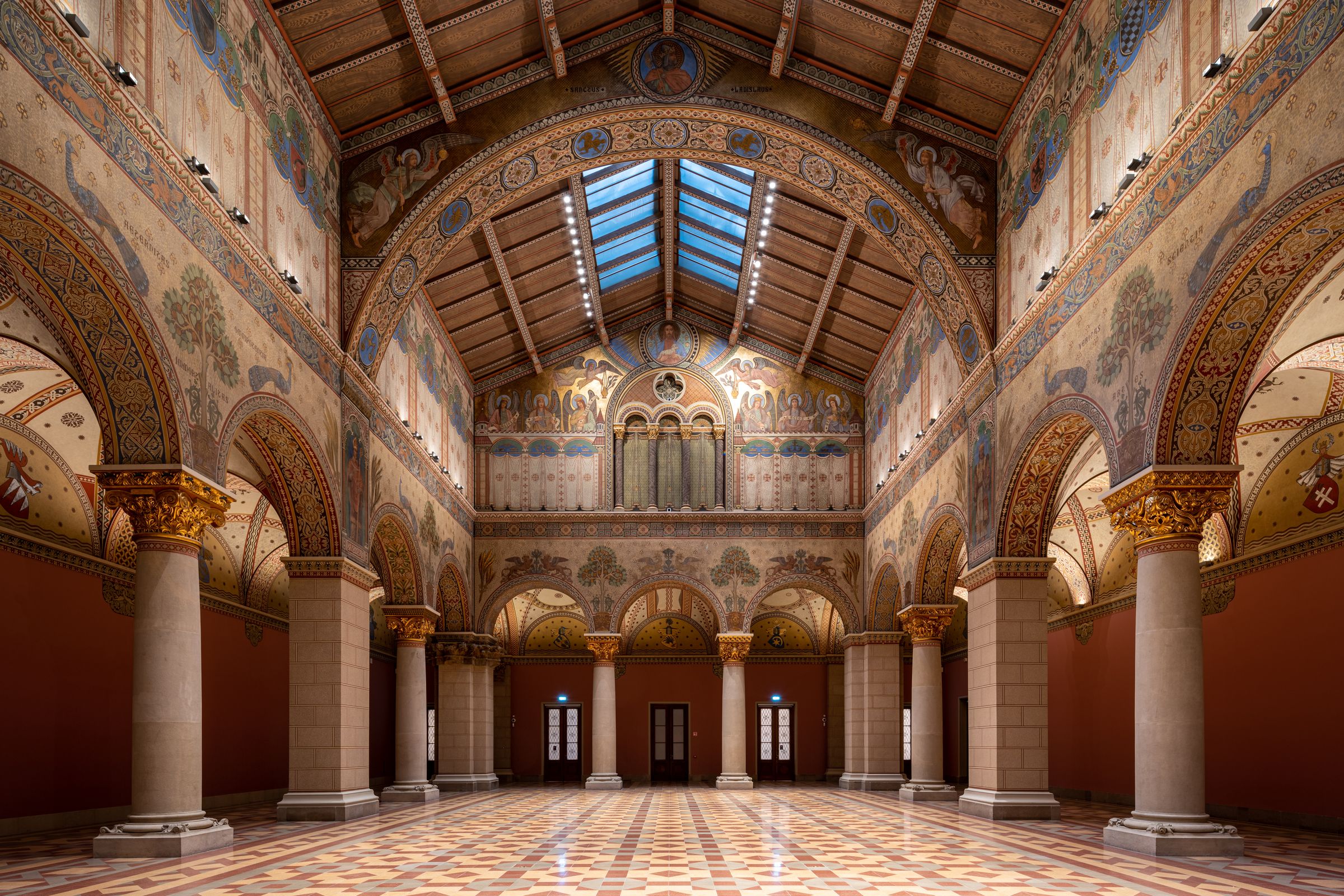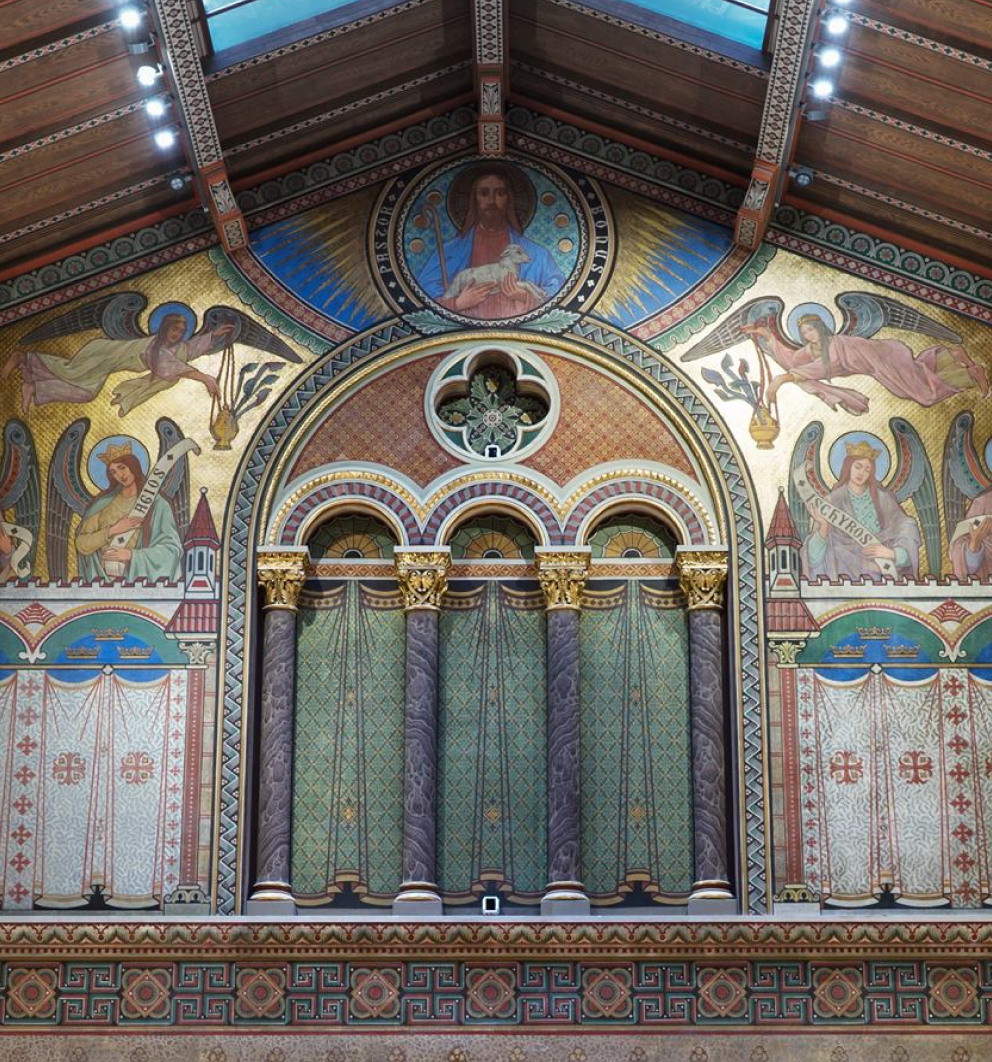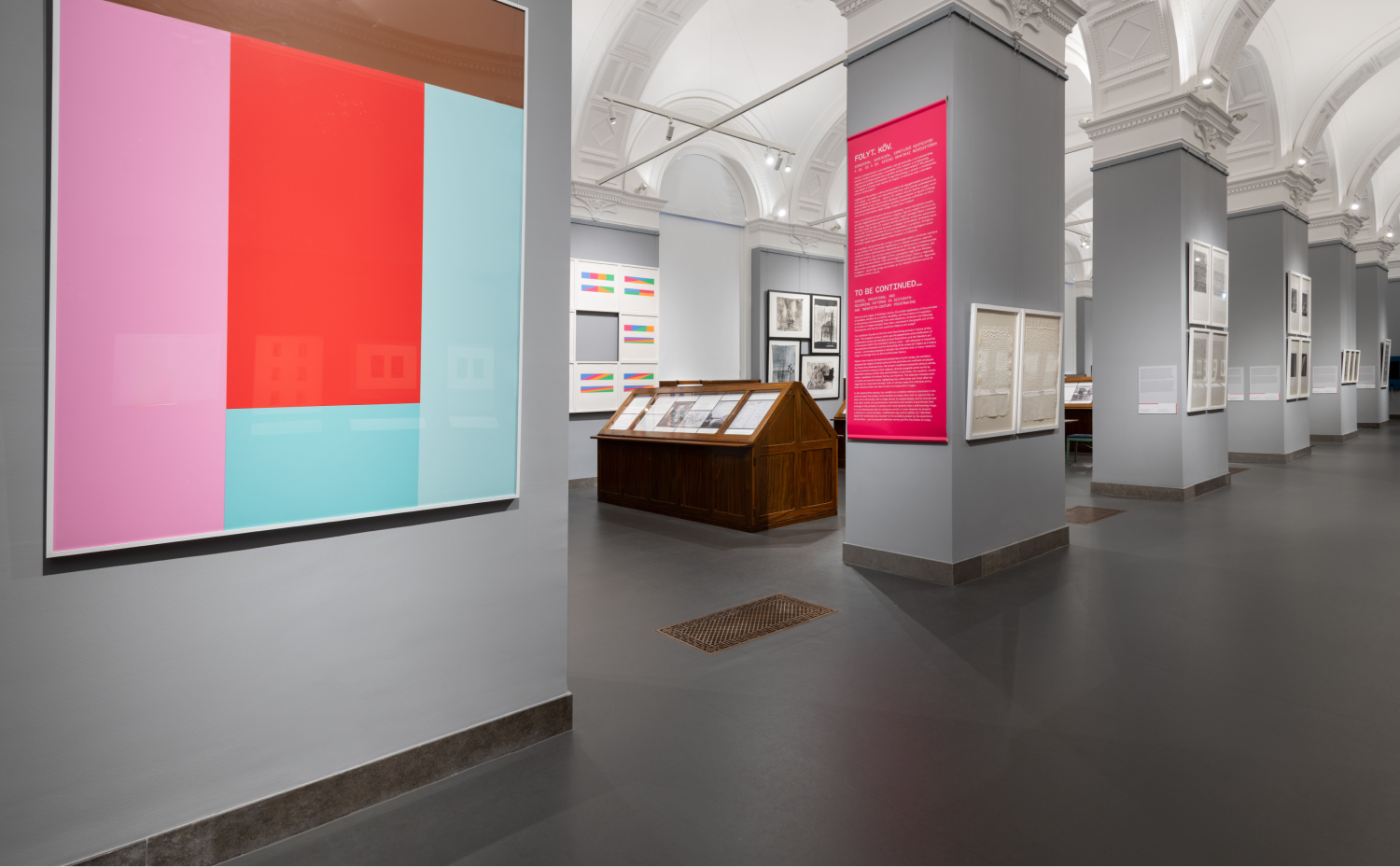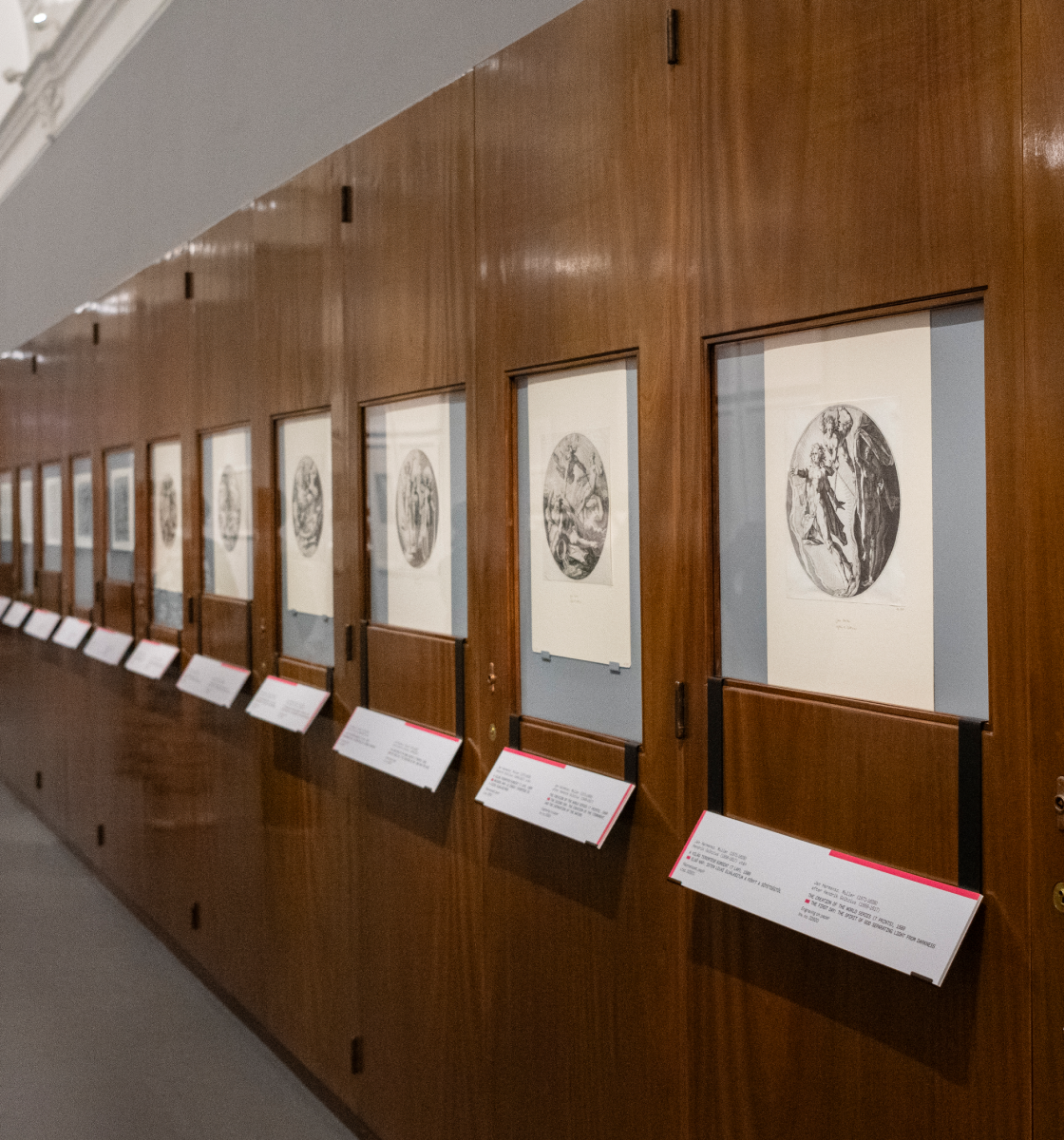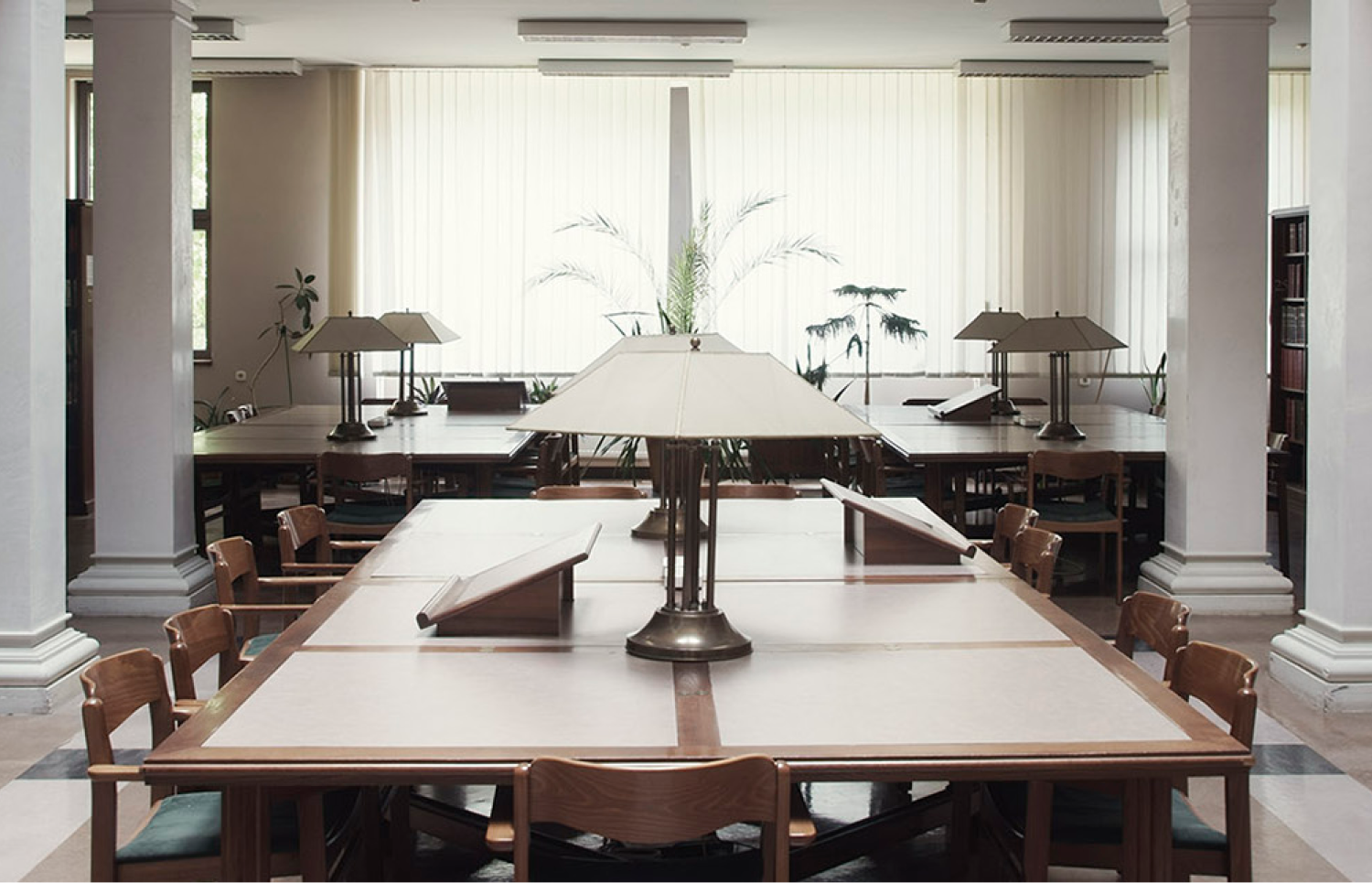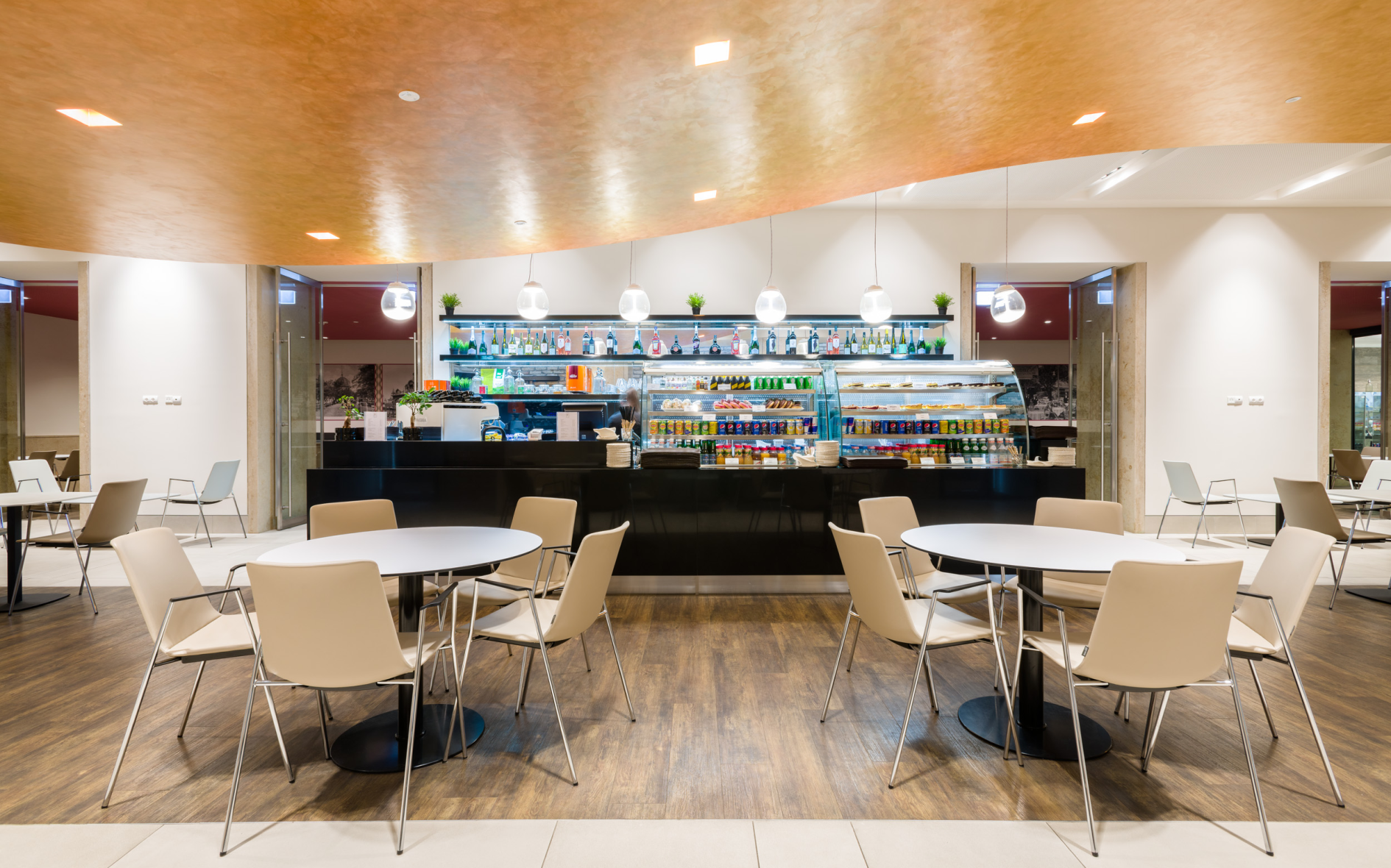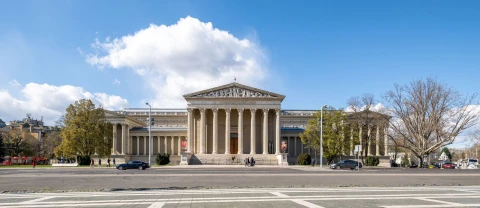
Museum of Fine Arts
One of Europe’s most prominent cultural institutions
The largest-scale renovation in the history of the Museum of Fine Arts was realised within the framework of the Liget Budapest Project. One of the most spectacular achievements of the more than three years of reconstruction works is that the breath-taking Romanesque Hall is now open to the public again after 70 years. Not only was the building renewed but, returning to the original collection concept, the permanent exhibitions of the museum were also re-arranged. Since its re-opening in 2018, the institution provided the venue for world sensations such as the Michelangelo, Cezanne, Bosch, Matisse, El Greco and Renoir exhibitions.
The museum first opened its doors in 1906, and since then it has been regarded as one of the most prominent cultural institutions not only of Hungary but also of Europe. Its collection allows an insight into universal and Hungarian art from ancient times to the end of the 18th century, while its large-scale temporary exhibitions attract hundreds of thousands of visitors. The holdings comprise a vast amount of more than 100 thousand artworks spanning from the treasures of ancient Egypt to the masterpieces of Renaissance masters as well as painting and sculptures of the 19th century.
Tradition and renewal

The museum building is a work of art in itself. It was built in a historicising style, with an ornamented facade and imposing stairwell and spacious halls. The establishment of the Museum of Fine Arts was decreed by the Millennium Act of 1896; the site chosen for the new institution in 1898 was the area opposite the Műcsarnok/Kunsthalle. The architectural design for the museum building was commissioned to Albert Schickedanz and Fülöp Herzog, who were also the architects of the Műcsarnok and the Millennium Monument on Heroes’ Square. The building was inaugurated on 1 December 1906 in the presence of Franz Joseph I, and was opened to the public on 5 December.
Travelling back into the past
As you arrive in front of the museum from the direction of Heroes’ Square, you are greeted by the sight of an antique temple with Corinthian columns on a wide, stepped base. Entering the building, you will find yourself in a large hall with the information desk and the ticket office being a great starting point for exploring the museum. Passing by these, you get to the large reception hall, which leads you straight into the ’heart of the building’, the Renaissance Hall. This splendid hall follows the style of 16th-century Italian architecture with its arcades, classical columns, balustrades and grotesque paintings harking back to Antique Roman frescos evoking the courtyard of a Renaissance palace. The hall provides the venue for two special ensembles of the Museum of Fine Arts’ works: Italian frescoes and Venetian wells.
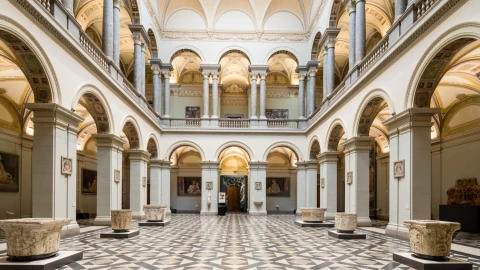
To the left from here, you can find the large hall of medieval architecture, the Romanesque Hall, which sustained serious damage during World War II and was then used as a warehouse for seventy years, but is now again one of the Museum of Fine Arts’ most spectacular and representative spaces. It is as if you were walking inside a huge, 900-square-metre medieval basilica. The walls are decorated by beautiful frescos, depicting iconic figures of Hungarian history and mythology. During the reconstruction of the Romanesque Hall 70 restorers returned nearly 2,500 square metres of surfaces to their original beauty. To achieve this, they used five kilograms of gold, 1,500 litres of conservation materials and 100 kilograms of pigments.
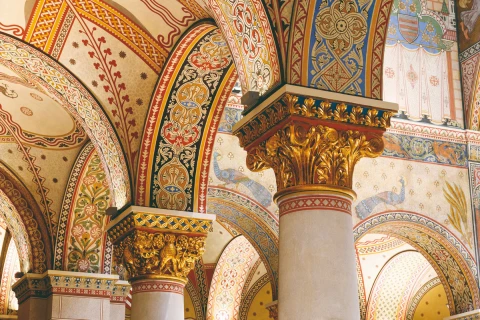
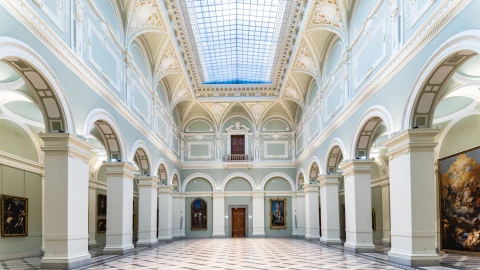
Returning to the Renaissance Hall and taking a right, you will get to the Baroque Hall, a monumental space bearing the stylistic features of Baroque architecture. Here, you can see the re-arranged permanent exhibition displaying a selection from the 17th- and 18th-century collections of the Old Master Paintings and the Old Sculptures.
Walking along these three unrivalled halls of the Museum of fine Arts from left to right, you can walk through the great periods of European Christian art from the Middle Ages to the Baroque era, while becoming acquainted with the ideas on art professed in the late 19th century, as well as its way of thinking that aspired to universality, i.e. the approach in which the museum itself was conceived.

Did you know?
When the Romanesque Hall was being renovated, experts found an interesting object while working on the rosette above the plaster replica of the Golden Gate of Freiberg Cathedral in the hall. They discovered a time capsule, inserted here more than 100 years ago, containing a slip of paper with a detailed list of those who participated in the decoration of the museum’s spaces at the time. This invaluable time capsule was placed back exactly where it had been found but supplemented with another capsule, containing the list of experts who directed the reconstruction project of 2017.
What did the Romanesque Hall look like before its renovation?
The museum’s most richly decorated space, the Romanesque Hall, which evokes the interior of a Romanesque temple, had been closed to visitors for seventy years before its renovation. The hall was damaged during World War II and was only partially renovated; until the museum’s complex renovation, it had functioned as a warehouse, storing some of the paintings of the Old Masters’ Gallery and the plaster casts preserved in the museum’s collection.
01 05
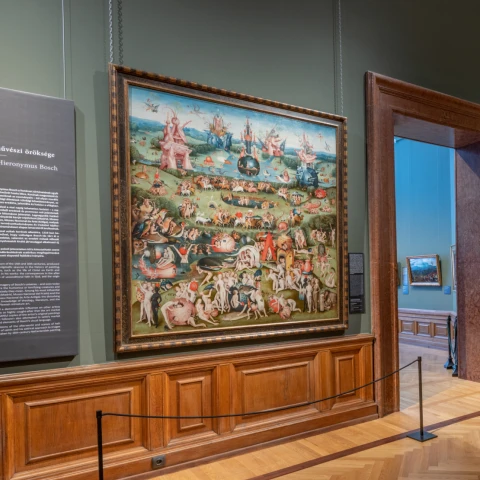
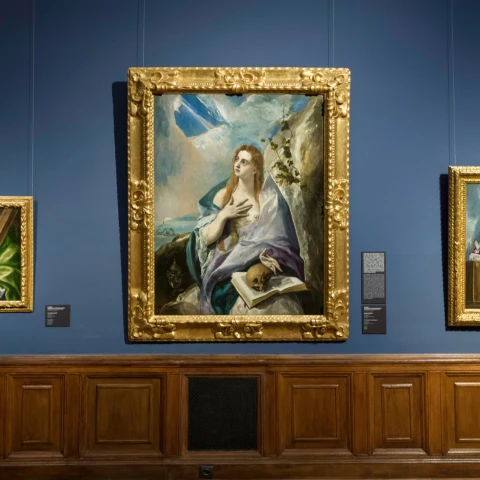
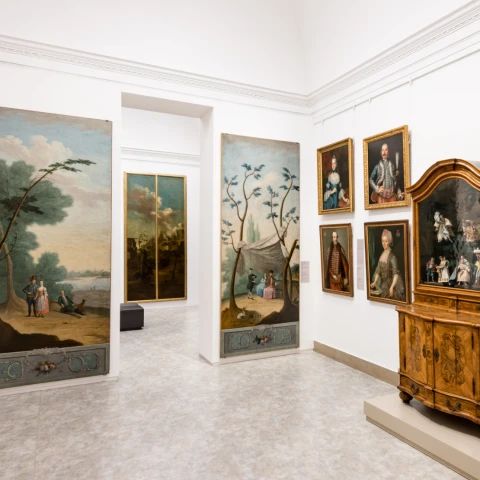
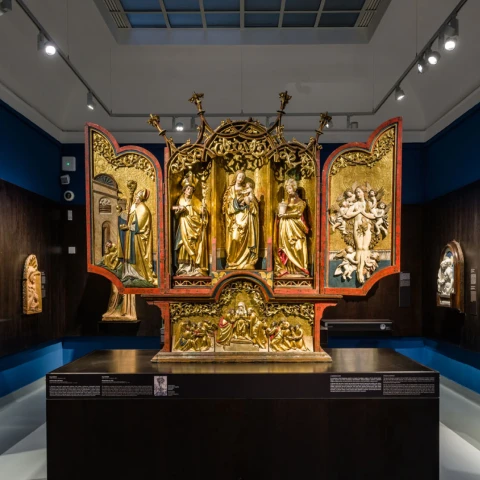
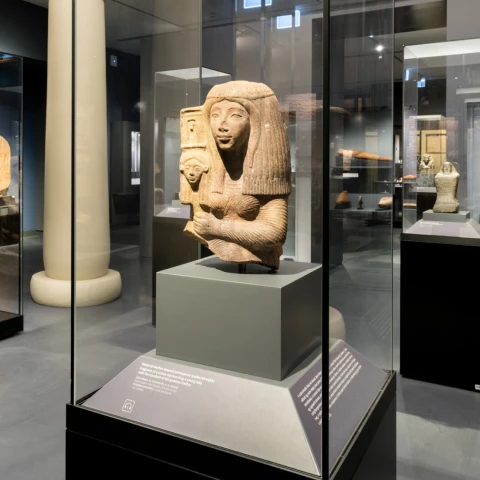
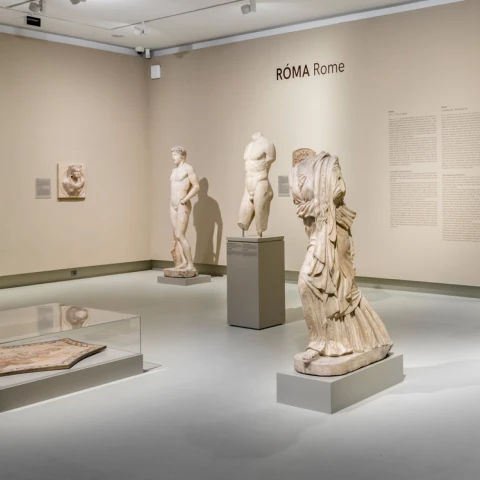
Collections
The collection of the Museum of Fine Arts offers an overview of the history of art from the ancient times to the eighteenth century. The diversity and historical continuity that characterises its art material, as well as the large number of its masterpieces have deservedly earned it a prestigious place among the world’s public collections.
Check out Hungary’s biggest iWall
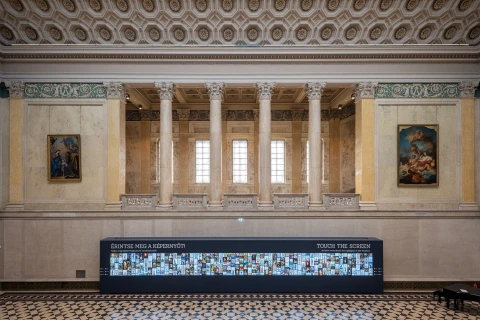
Besides traditional exhibition methods, your exploration of the collections of the Museum of Fine Arts will be enhanced by the world’s biggest interactive museum touchscreen. The impressive 15-metre-wide iWall made up of 21 LCD displays is installed in the impressive reception space, the Marble Hall of the museum. With its spectacular animations and the data of nearly 300 artefacts/ artworks it helps visitors to discover these pieces thanks to the most cutting-edge technology.
Tip
Time virtually flies among the treasures of the Museum of Fine Arts, so it is worth taking a rest or two and going down to the lower level of the building, where you can discuss what you have seen while enjoying fine food, coffee and desert specialties in the FineArt Bistro.
Before saying good-bye to the museum, make sure to pop in to the MuseumShop on the ground floor, where you can find a rich selection specifically tailored to the taste of art lovers, including design products inspired by the museum’s permanent and temporary exhibitions, gifts made in-house, as well as art publications for children and adults.
